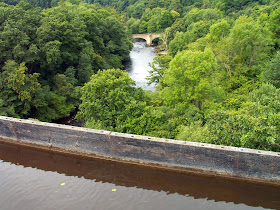The Industrial Revolution of the late 18th century demanded serious transportation for goods and the extraordinary construction of some difficult canal routes is now a wonder to behold.
The Standedge canal and railway tunnel
Running between Marsden in West Yorkshire and Diggle in Greater Manchester, The Standedge canal and railway tunnel under the Pennines , is the longest tunnel in the UK
The stairway to heaven
Hatton Locks, climbing the hill from Warwick Birmingham
Born of the Industrial Revolution, the Pontcysyllte Aqueduct took 10 years to build between 1795 and 1805. Poised above the
Pontcysyllte, pronounced ‘pont-ku-sih-hl-ter’, means,’the bridge that connects’.
This magnificent example of Georgian architecture is the UK
Pontsysyllte Aquaduct









No comments:
Post a Comment